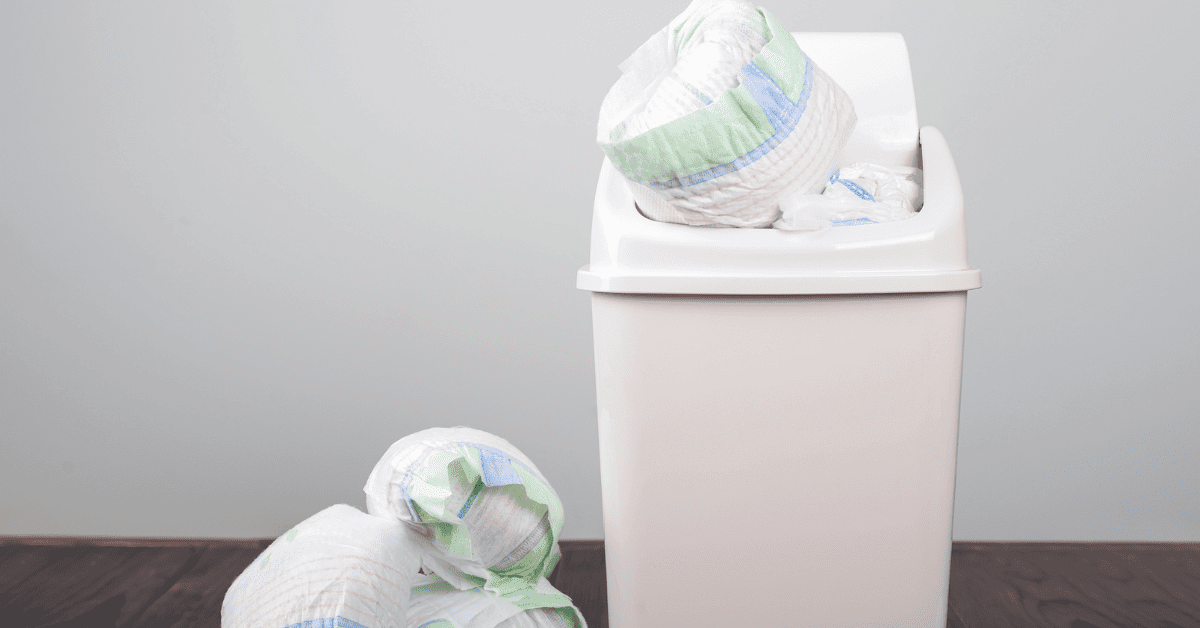acozyfuture.com - Disposable diapers have transformed modern parenting. They are convenient, easy to use, and save parents countless hours of washing and drying cloth diapers.
However, this convenience comes with a cost as millions of tons of diaper waste end up in landfills every year, taking centuries to break down. With growing awareness of environmental issues, many parents are asking: Can disposable diapers ever become truly eco-friendly?
This blog explores how diaper companies and scientists are reimagining one of the most essential baby care products to reduce its environmental footprint.
What Are Disposable Diapers?

Disposable diapers are single-use absorbent garments designed to keep babies dry and comfortable. They consist of several layers:
-
Top sheet: soft fabric that touches the baby’s skin.
-
Absorbent core: contains materials like wood pulp and superabsorbent polymers that lock in liquid.
-
Back sheet: waterproof outer layer that prevents leaks.
-
Fastening tabs: help secure the diaper snugly.
Unlike cloth diapers, which need to be washed and reused, disposable diapers are thrown away after each use. Their convenience has made them the most popular diapering choice worldwide, with more than 300 billion disposable diapers used each year.
However, their mass production and disposal raise serious environmental concerns since most are made from non-biodegradable plastics and chemical-based absorbents.
When Did They Come Out with Disposable Diapers?
The first disposable diapers appeared in the 1940s when Swedish inventor Marion Donovan created a waterproof diaper cover using shower curtain material. By the 1950s, paper-based diapers started being sold commercially in Europe.
In the 1960s, Pampers revolutionized baby care by introducing mass-produced disposable diapers that quickly gained popularity among parents. Over time, improvements in absorbency, comfort, and leak protection made them a household staple.
By the 1990s, diaper technology had advanced significantly, introducing superabsorbent polymers (SAPs) that could hold large amounts of liquid while keeping the diaper thin. In recent years, diaper companies have turned their focus to sustainability, developing materials and production methods that reduce waste and carbon emissions.
Read More: The Pros and Cons of Disposable Diapers vs Cloth Diapers
Can Disposable Diapers Ever Become Eco-Friendly?

This is the big question, and the answer is partly, but we are getting closer.
Disposable diapers cannot yet be called fully eco-friendly, but major innovations are changing how they are made and disposed of.
1. Biodegradable and plant-based materials
Some brands now use renewable resources such as cornstarch, bamboo fiber, and organic cotton to replace petroleum-based plastics. These natural materials decompose faster and are gentler on babies’ skin.
For example:
-
Eco by Naty uses bio-based plastics made from sugarcane and compostable packaging.
-
Bambo Nature incorporates FSC-certified pulp sourced from sustainable forests.
These options reduce plastic waste and support responsible sourcing practices.
2. Recycling and composting programs
Traditional disposable diapers take up to 500 years to decompose, but recycling programs are starting to make a difference. Some initiatives collect used diapers, separate organic and plastic components, and recycle them into new products or compost materials.
While large-scale diaper recycling is still in development, early programs in countries such as Japan and the Netherlands show promising results.
3. Reduced carbon footprint
Manufacturers are investing in eco-efficient production, using renewable energy, minimizing water waste, and sourcing materials locally. These steps help lower the overall environmental impact of each diaper.
4. Innovation in diaper design
Modern disposable diapers are thinner and more absorbent than older versions. By reducing material use without sacrificing performance, companies can lessen waste per diaper.
While a completely biodegradable disposable diaper is not yet common, these advancements point toward a future where sustainability and convenience coexist.
Read More: Hidden Danger in Disposable Diapers
What Is the Biggest Disadvantage of Using Disposable Diapers?
The most significant disadvantage of disposable diapers is their environmental impact. Each diaper contributes to a growing waste problem, and because most contain plastics and superabsorbent polymers, they do not fully decompose for hundreds of years.
Other drawbacks include:
-
High resource consumption: Manufacturing requires large amounts of water, energy, and raw materials.
-
Landfill overload: An average baby uses around 5,000 to 6,000 diapers before potty training, adding up to tons of waste per household.
-
Chemical concerns: Some brands may include chlorine, dyes, or fragrances that can irritate sensitive baby skin.
Compared to cloth diapers, disposables offer convenience but come at a greater ecological cost. For eco-conscious parents, choosing greener diaper options or brands with sustainability initiatives can help minimize harm.
Read More: Minimising the Environmental Harm Caused by Disposable Diapers
Which Are the Best Disposable Diapers?
If you are looking for the best disposable diapers that balance performance and sustainability, here are some top-rated options to consider:
1. Eco by Naty
-
Made from plant-based, compostable materials.
-
Free from chlorine, latex, and fragrances.
-
Certified by TÜV Austria for compostability.
Why it’s great: It is one of the most eco-friendly diapers available, combining comfort with low environmental impact.
2. Pampers Pure Protection
-
Hypoallergenic and made with premium cotton.
-
Free from chlorine bleaching, parabens, and latex.
-
Maintains the trusted absorbency of regular Pampers.
Why it’s great: A reliable choice for parents who want a diaper that is gentle on skin and still performs well.
3. Bambo Nature
-
Uses sustainably sourced materials that are FSC-certified.
-
Dermatologically tested and eco-labeled.
-
Comes in biodegradable packaging.
Why it’s great: It is gentle on babies and the planet, offering strong absorbency without harsh chemicals.
4. Cozycove Diapers
-
Chlorine-free, latex-free, and made with breathable fabrics.
-
Highly absorbent design keeps skin dry longer.
-
Prioritizes comfort, safety, and sustainability.
Why it’s great: Cozycove Diapers are ideal for eco-conscious parents who want effective protection with a gentler environmental footprint.
Cozycove was created with a simple yet profound vision: Envision a world without diaper waste. We believe parenthood should bring joy, not more plastic pollution.
Our ultra-thin and super-absorbent diapers are designed for sensitive skin and active little explorers, made with sustainability and comfort in mind.
Our mission drives everything we do: To reduce diaper waste and build a cleaner, safer world for the next generations.
Each Cozycove diaper features a 5-Layer Pee Lock core that holds over 600ml for up to 12 hours, breathable fabrics to prevent irritation, and flexible fits for worry-free play. No harsh chemicals, no leaks, just all-day comfort.
👉 Check this out:
Cozycove Snooze On Diapers (Travel Pack)
Cozycove Play Hard Diapers (Travel Pack)
🏆 Check out our most recent milestone: Cozycove is Plastic Neutral! Next Up: Diaper Neutral
Conclusion
Disposable diapers have long been seen as a major source of waste, but change is happening. From plant-based materials to recycling efforts, the diaper industry is making steady progress toward sustainability.
Although they may never be 100 percent eco-friendly, disposable diapers can become significantly greener through innovation, responsible sourcing, and conscious consumer choices.
As more parents support eco-conscious brands and push for sustainable solutions, the dream of an environmentally friendly diaper may soon become a reality. Every small choice makes a difference in creating a cleaner, healthier planet for the next generation!
Related Articles:
Minimising the Environmental Harm Caused by Disposable Diapers
The Pros and Cons of Disposable Diapers vs Cloth Diapers
Hidden Danger in Disposable Diapers
What Happens When You Throw Away Used Diapers in Singapore?
7 Environmental Benefits of Diaper Recycling




Share:
Cozycove is Plastic Neutral! Next Up: Diaper Neutral
Do Biodegradable Diapers Really Break Down?